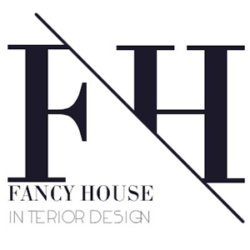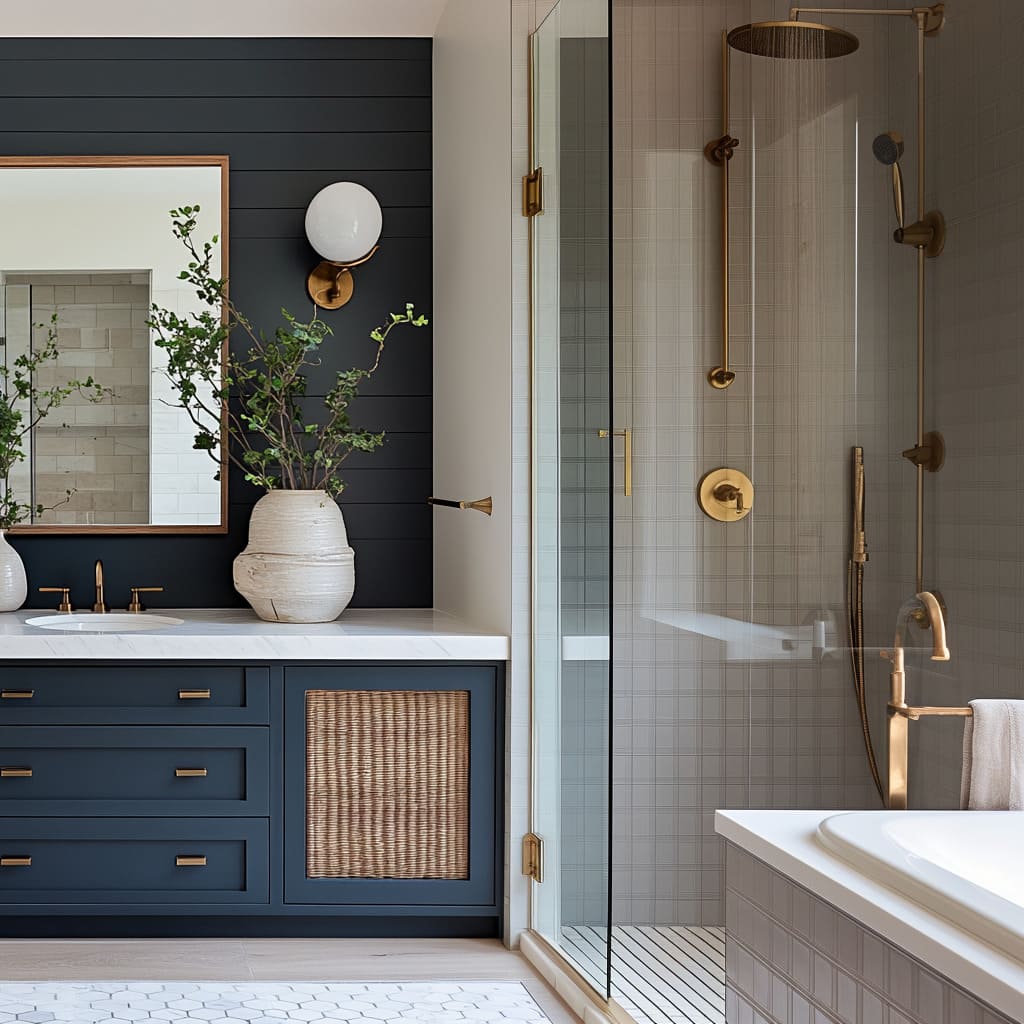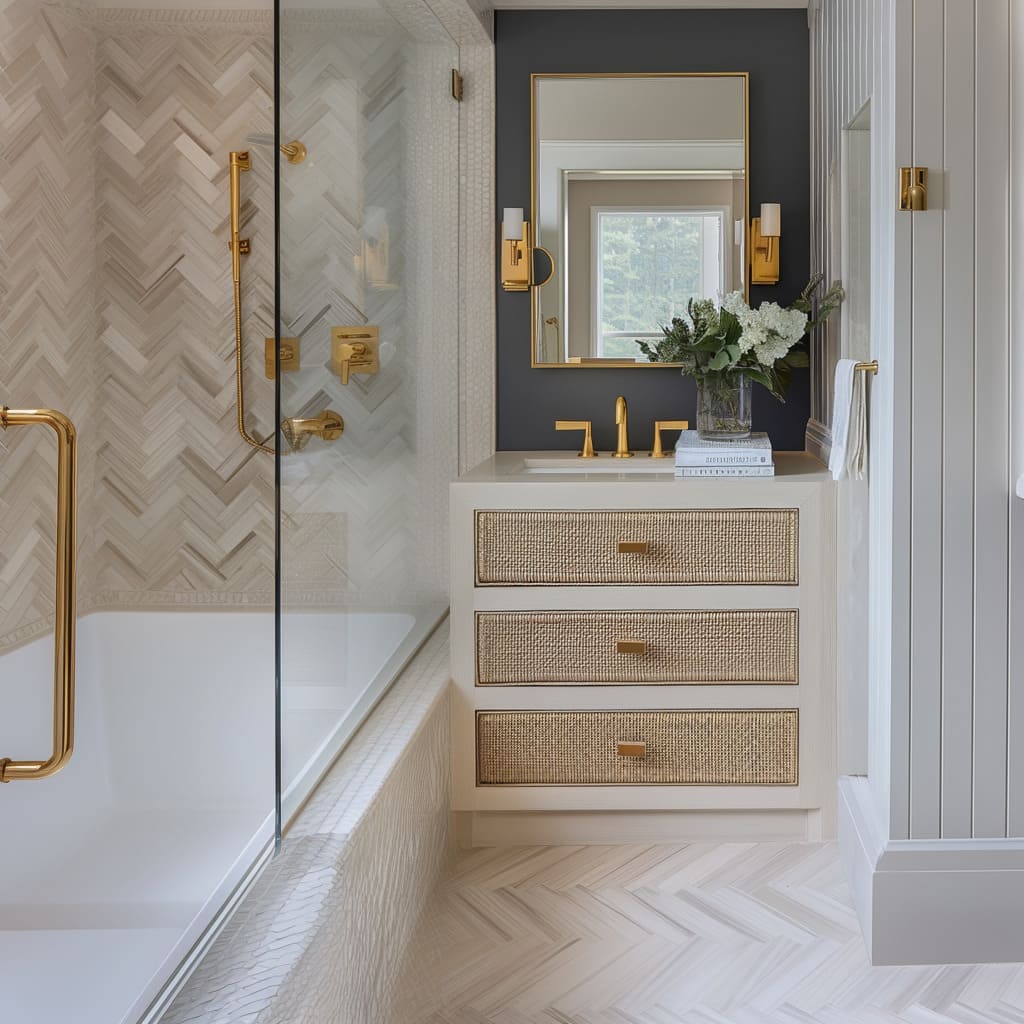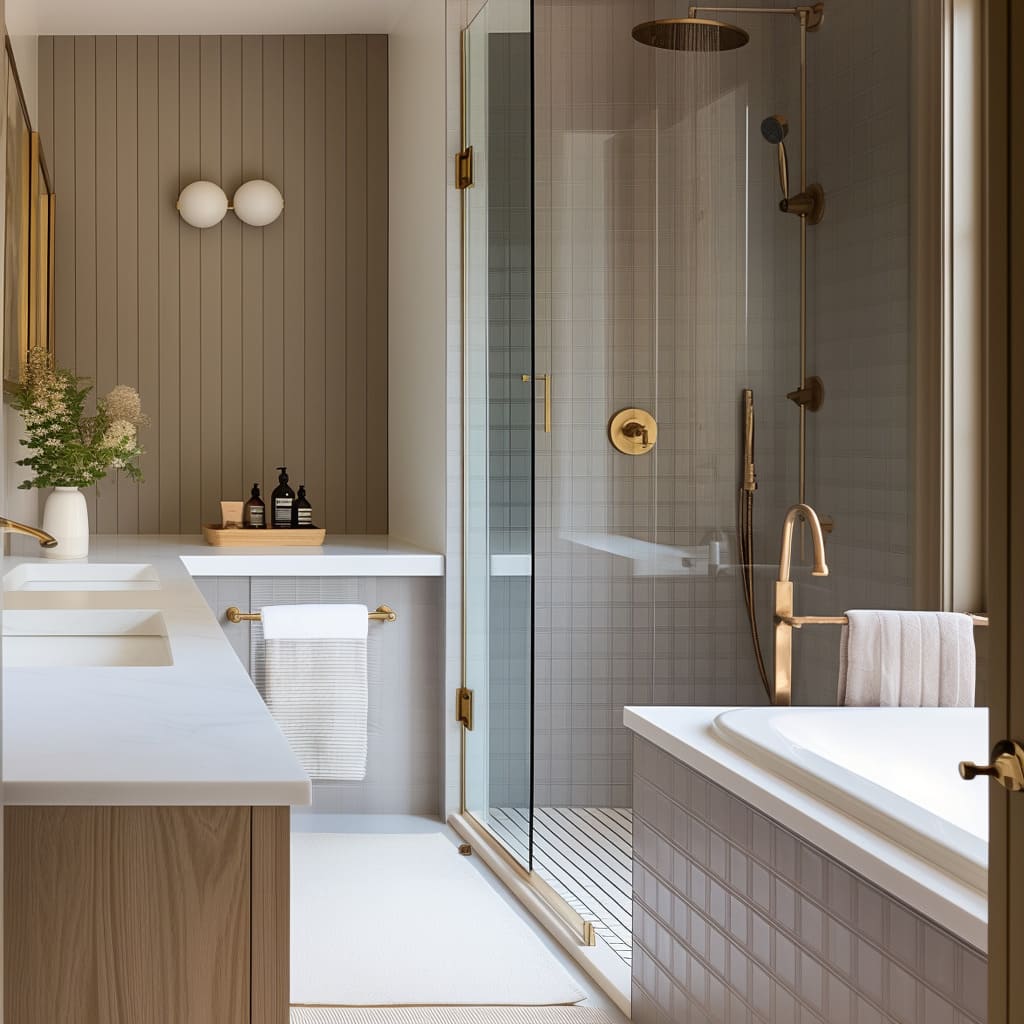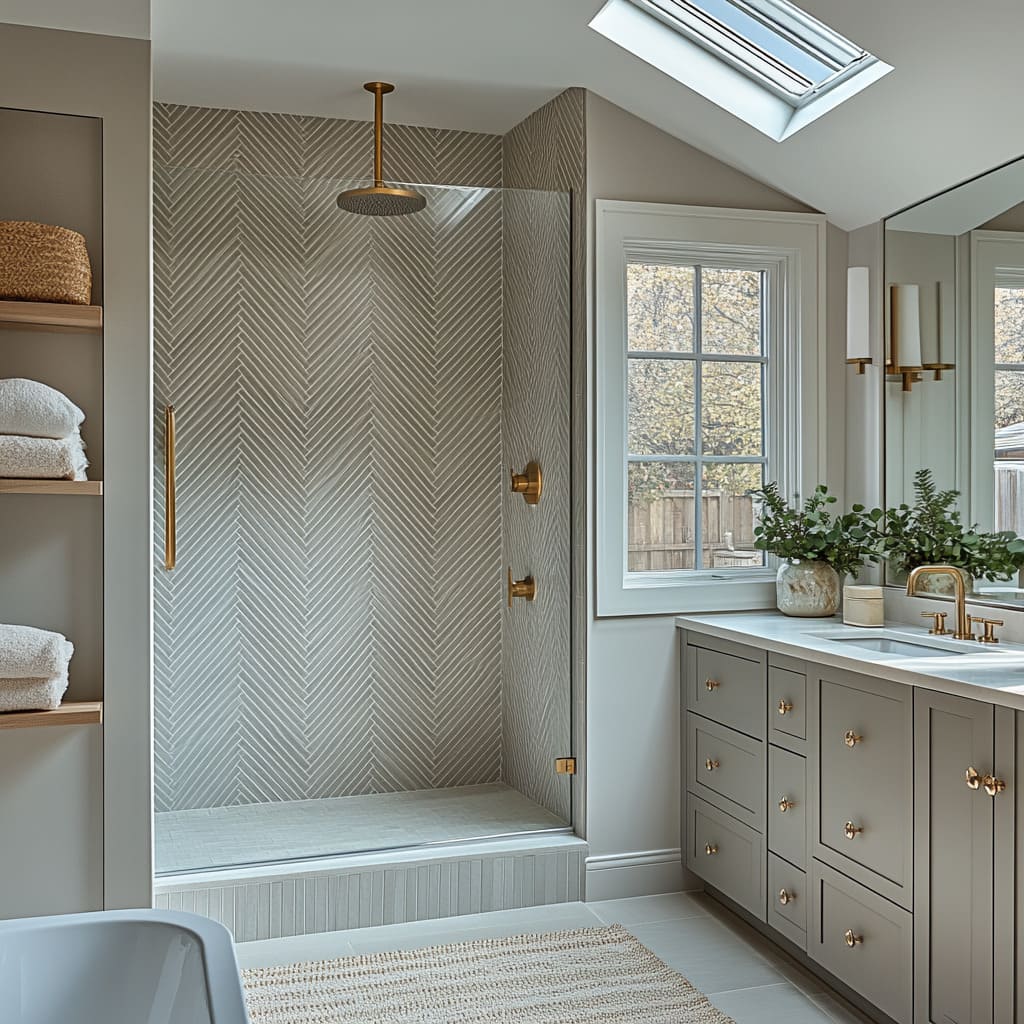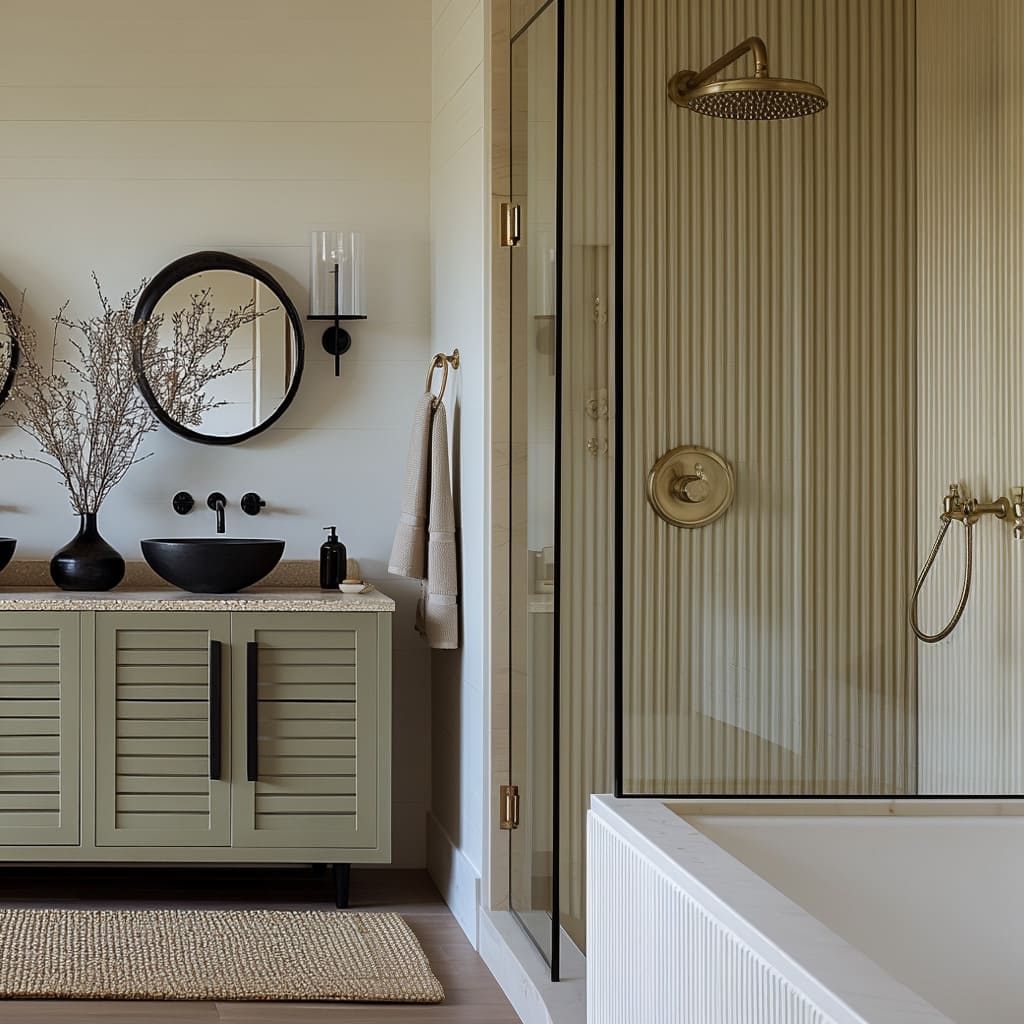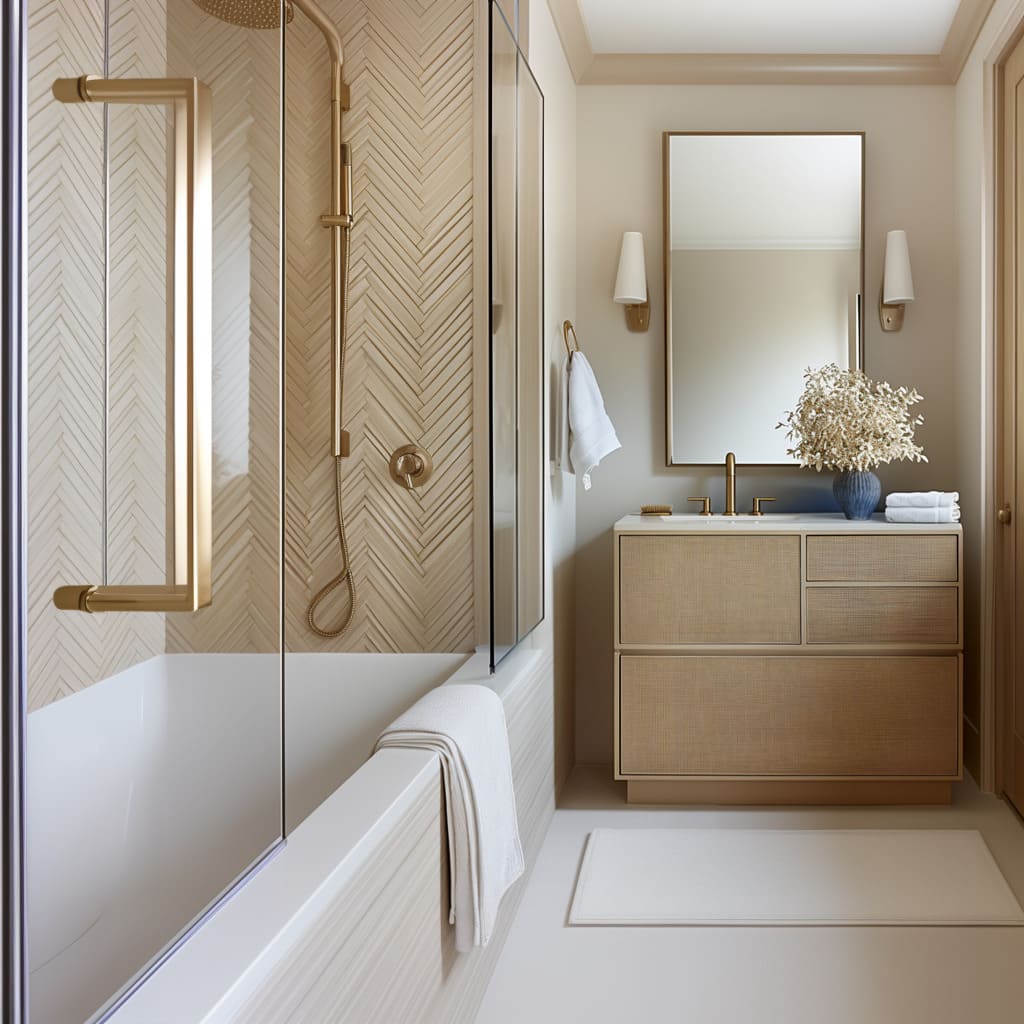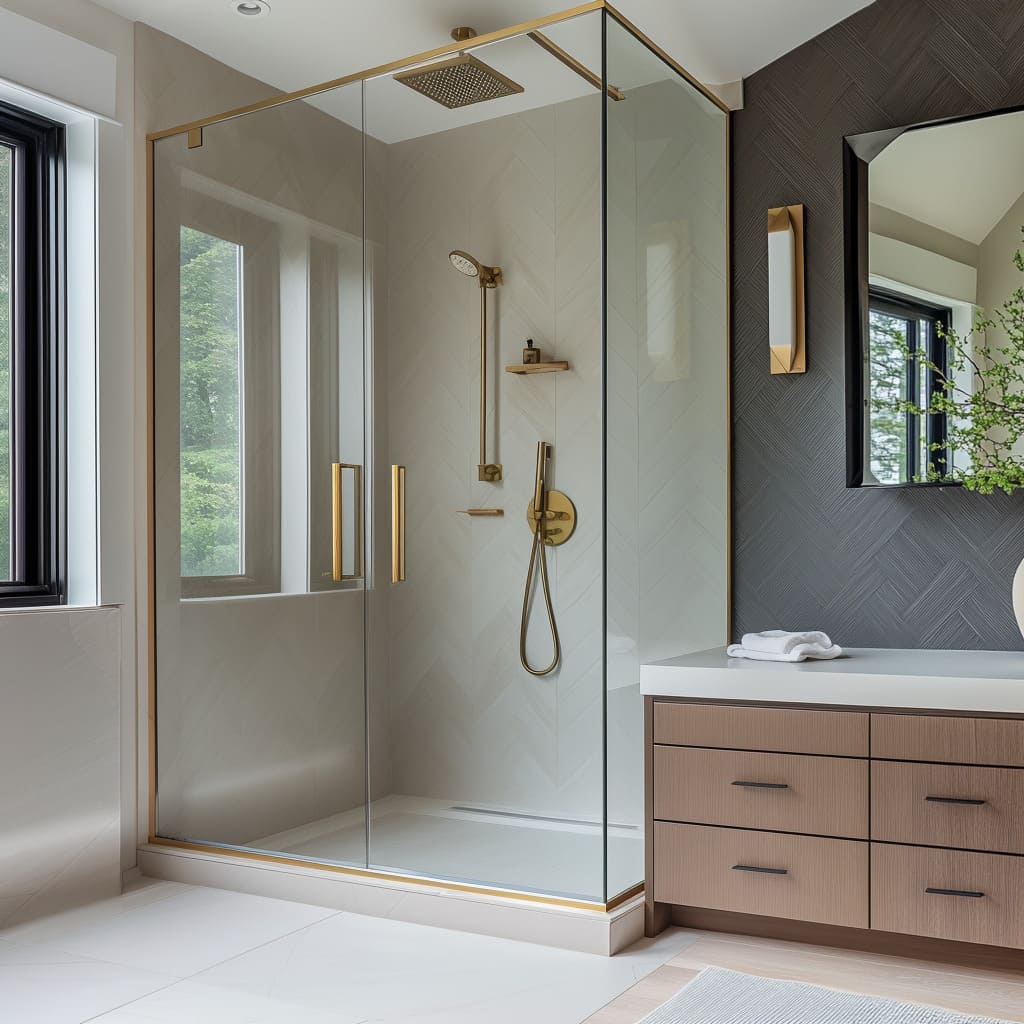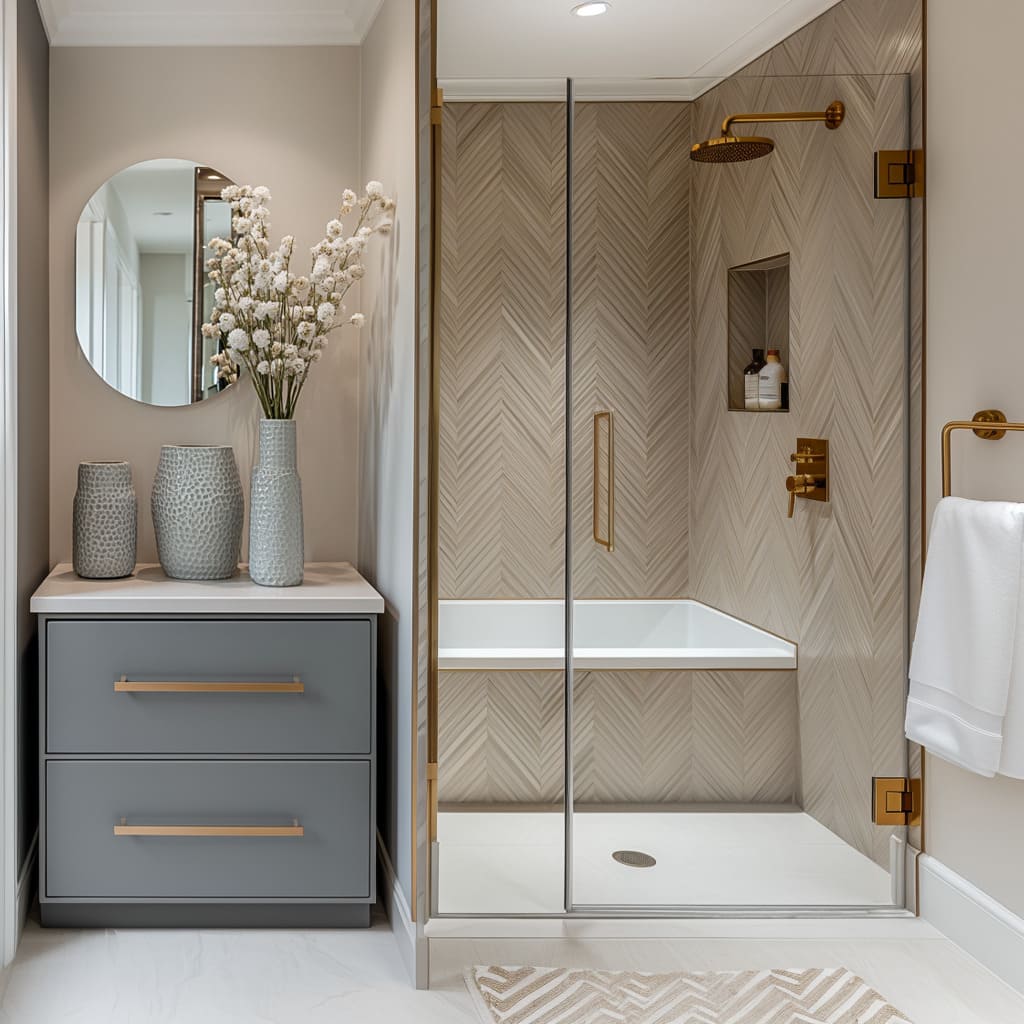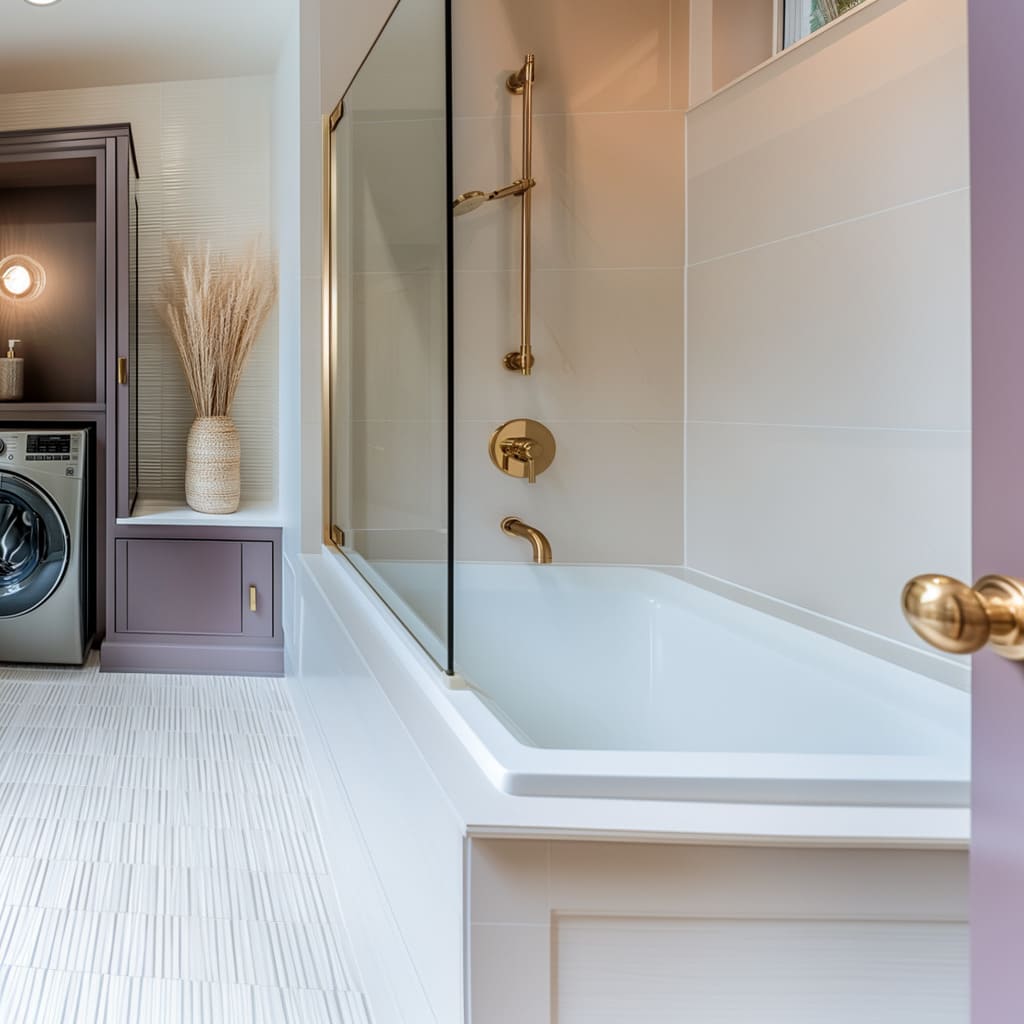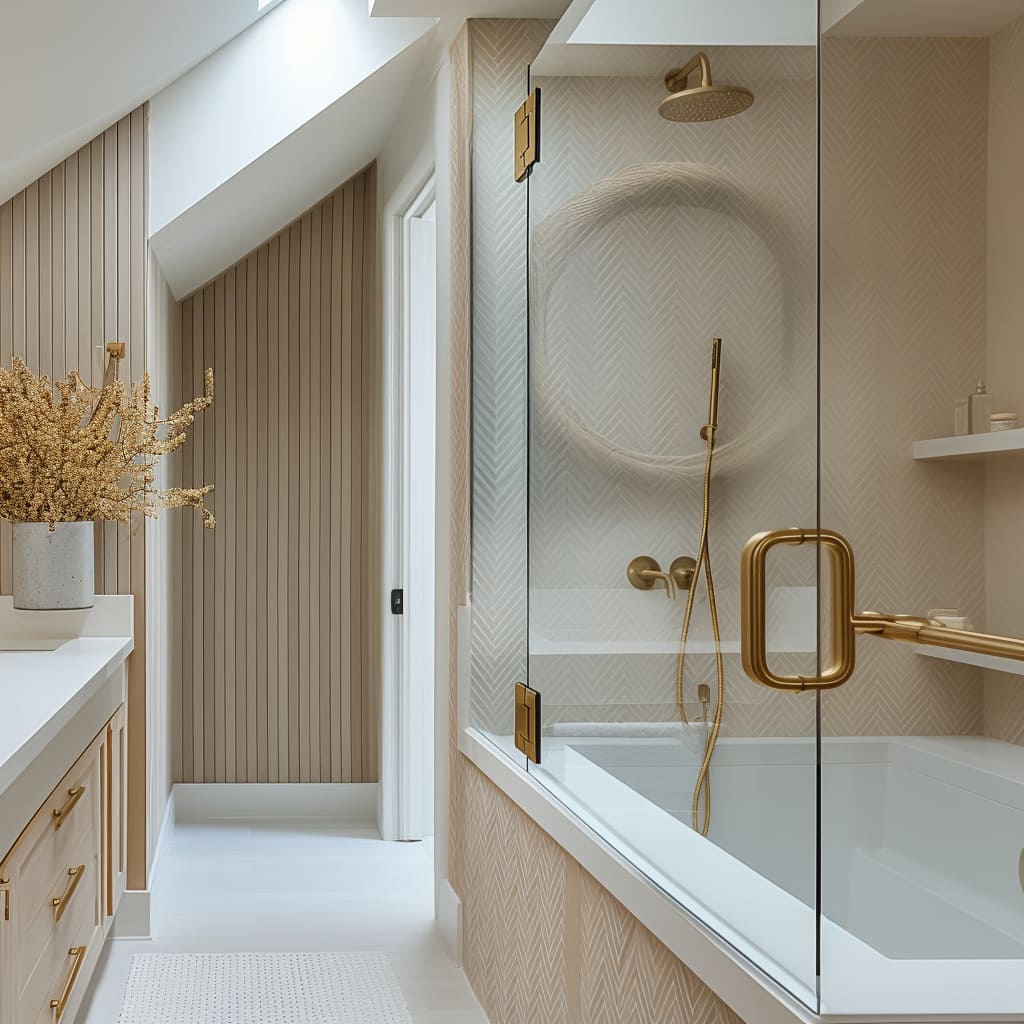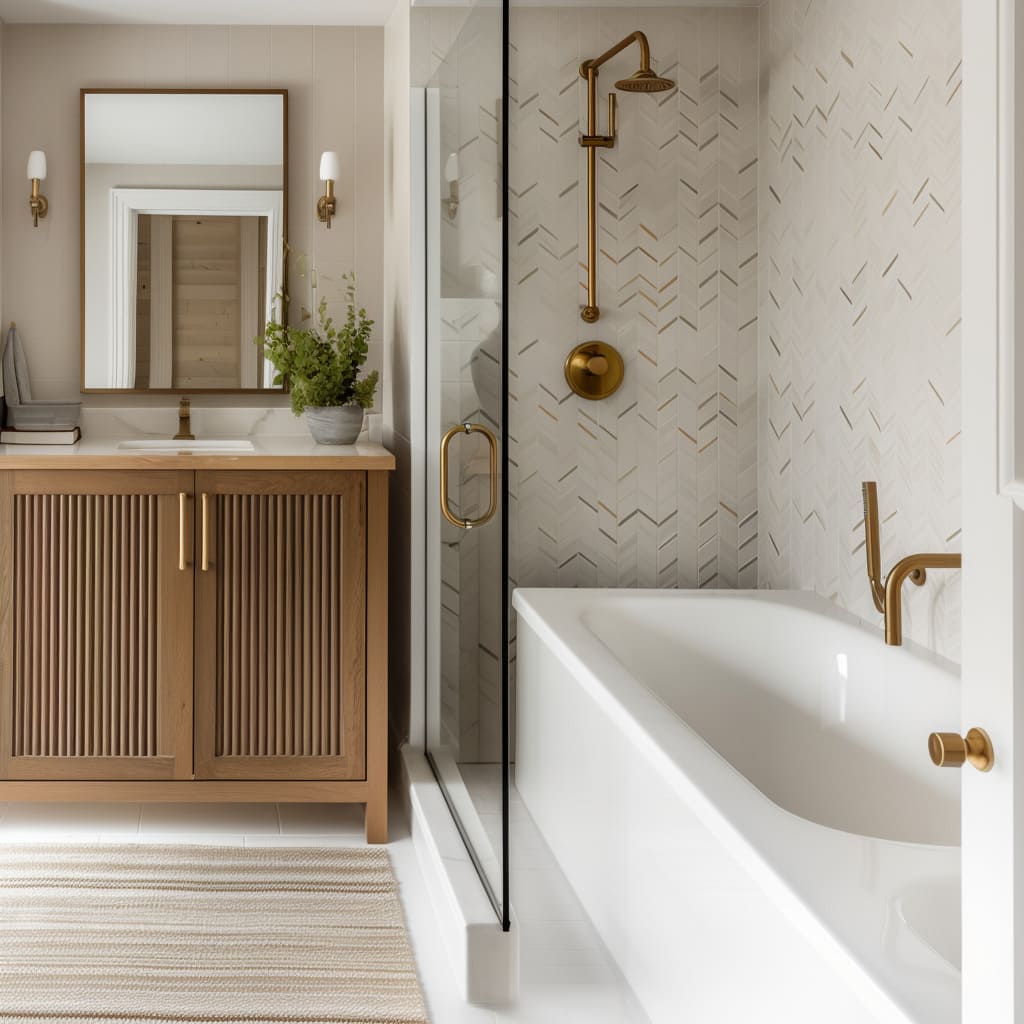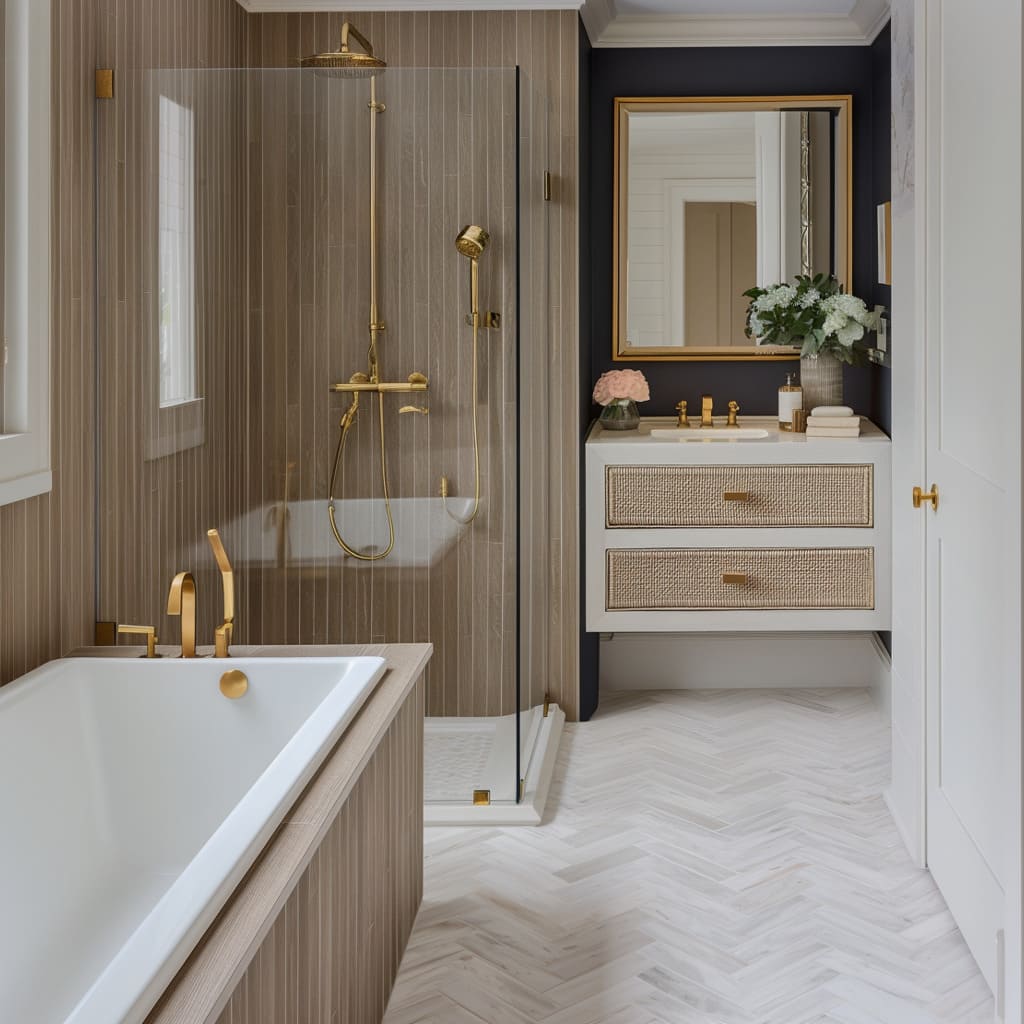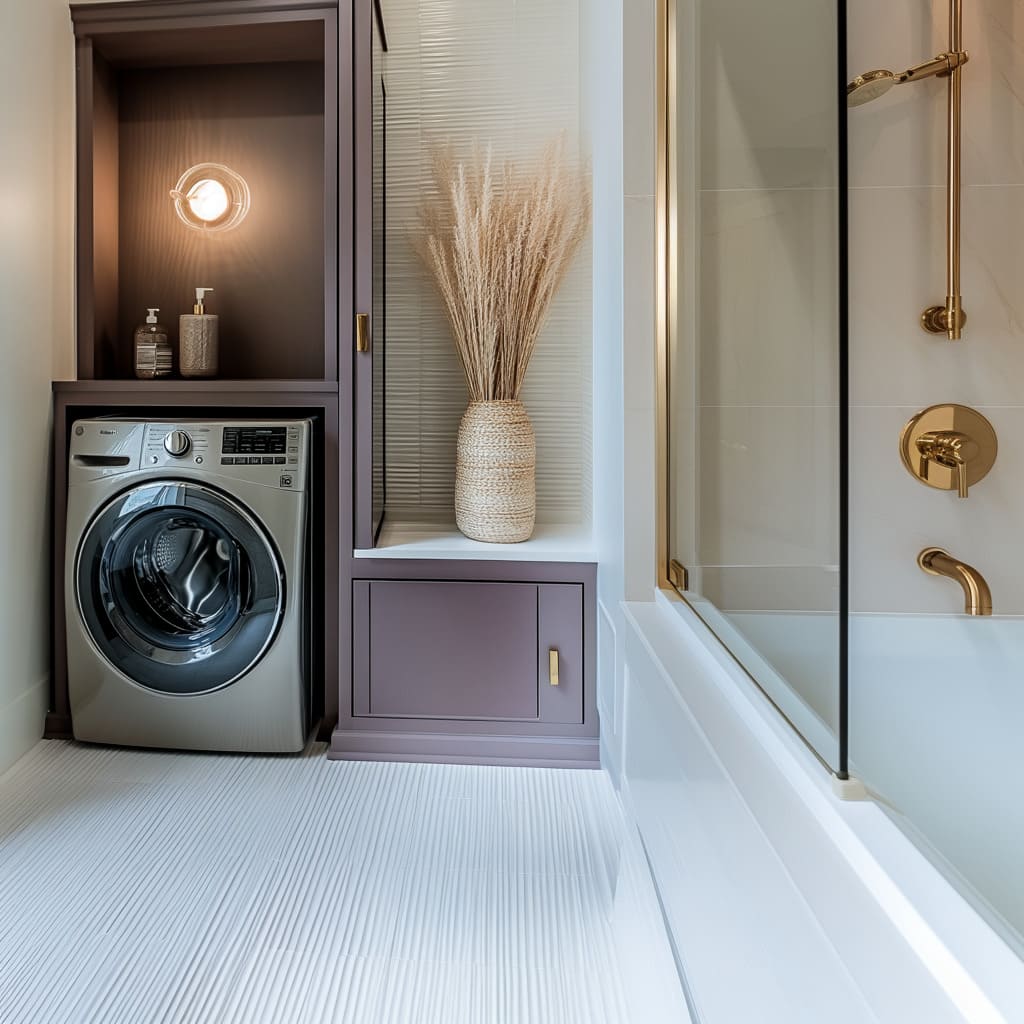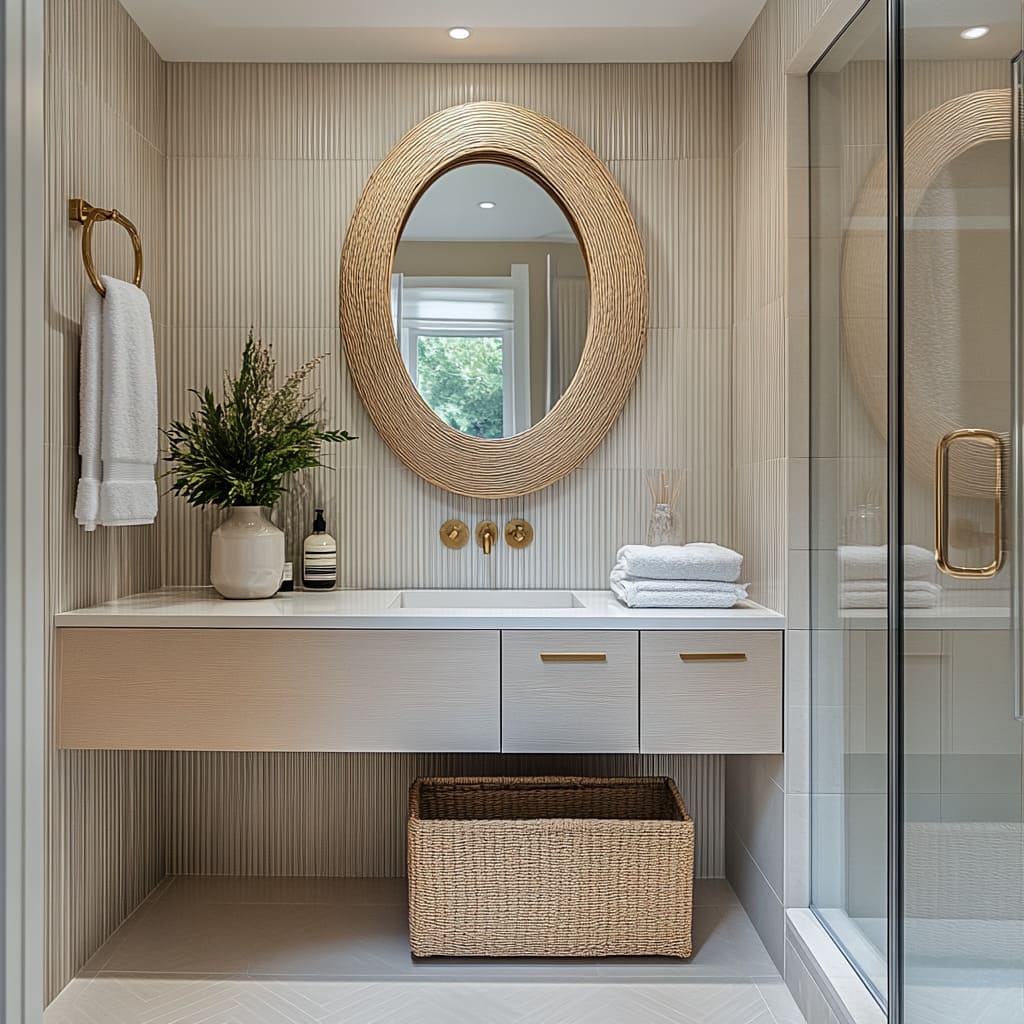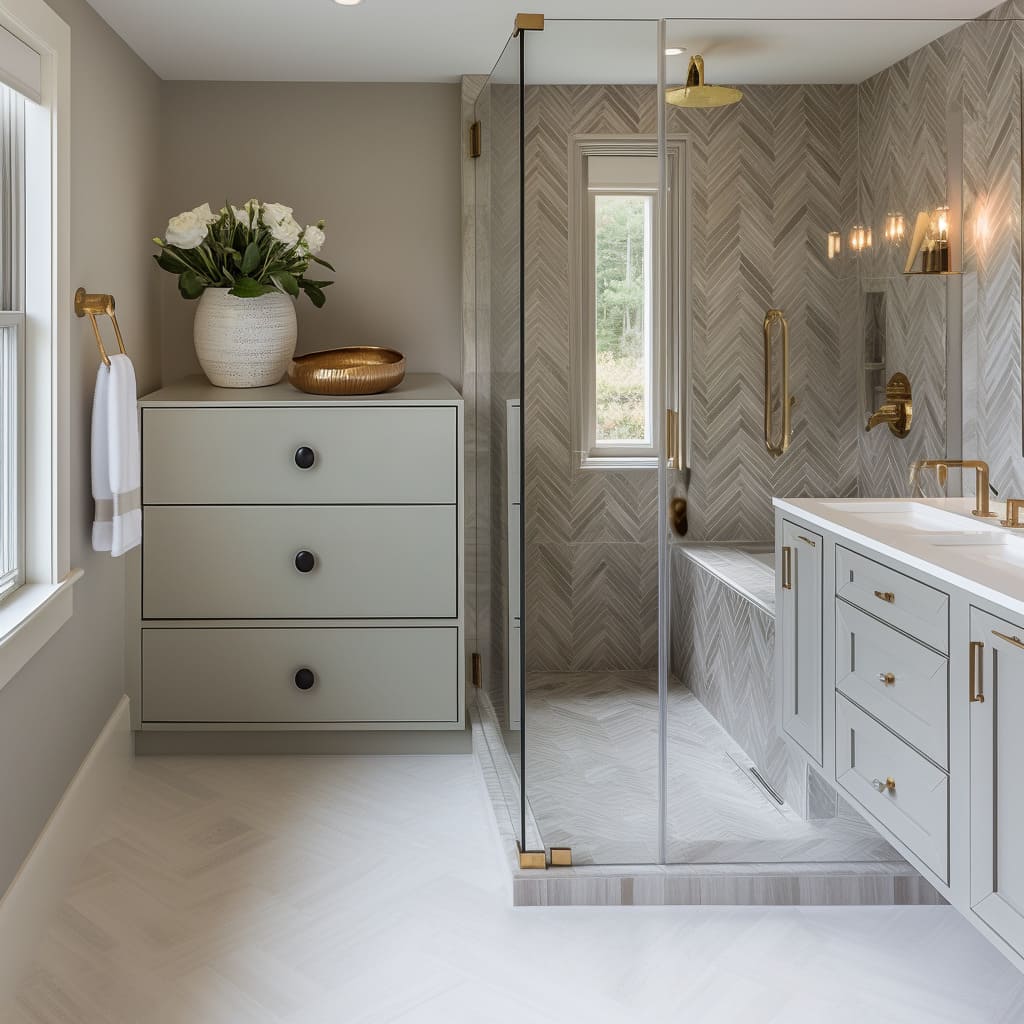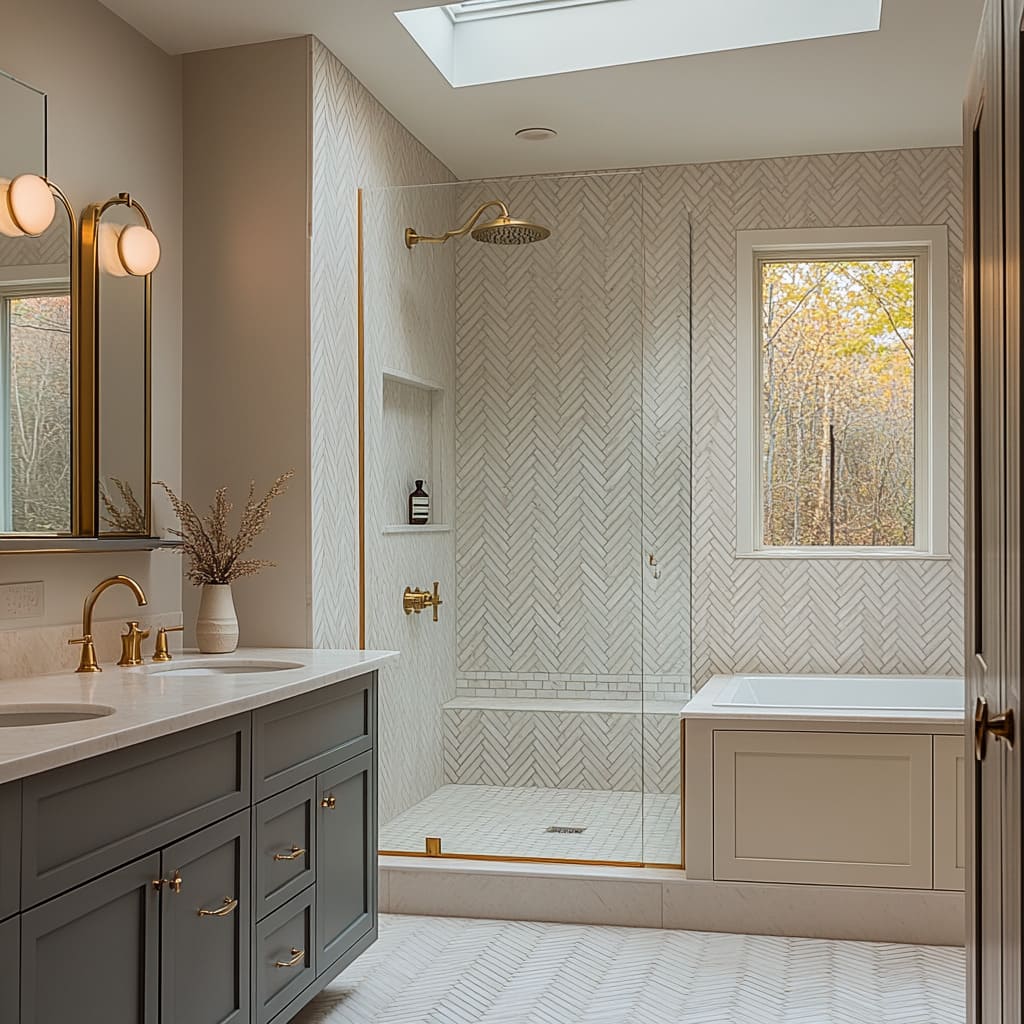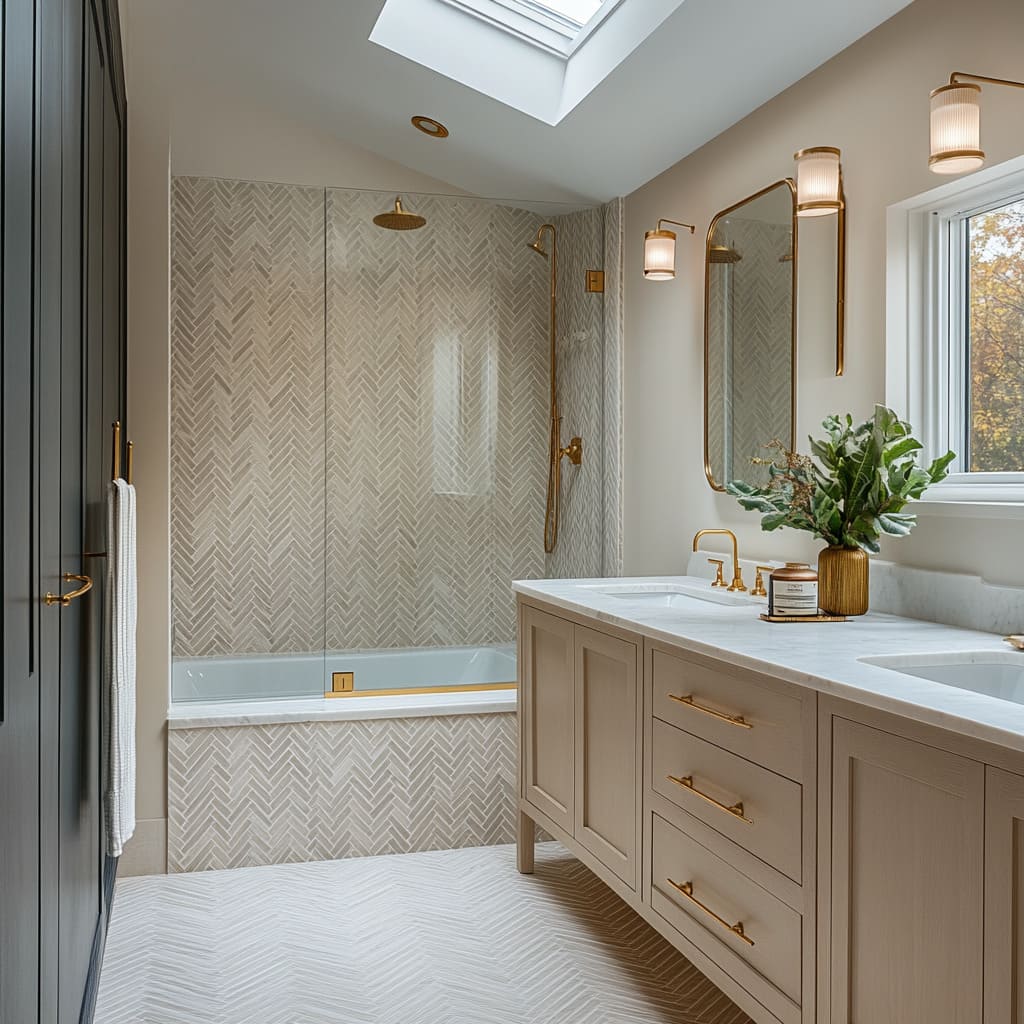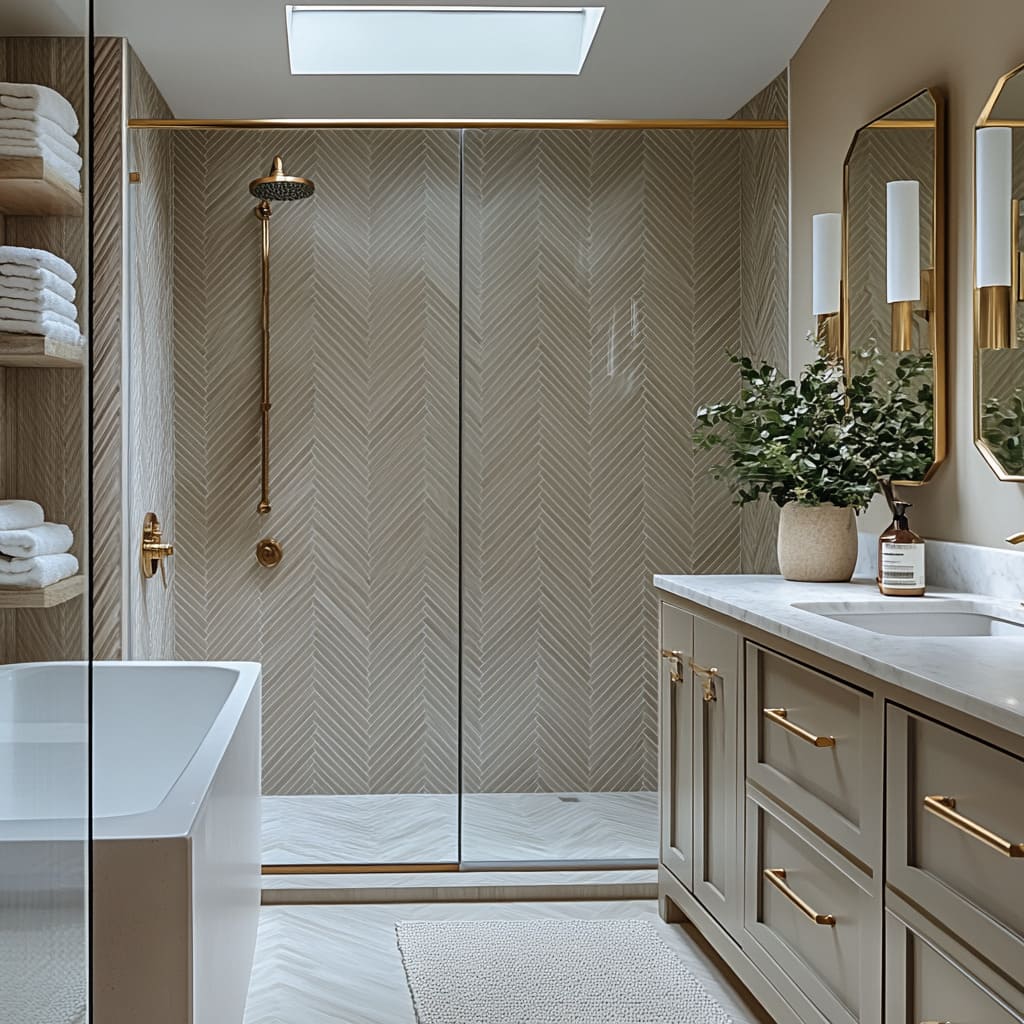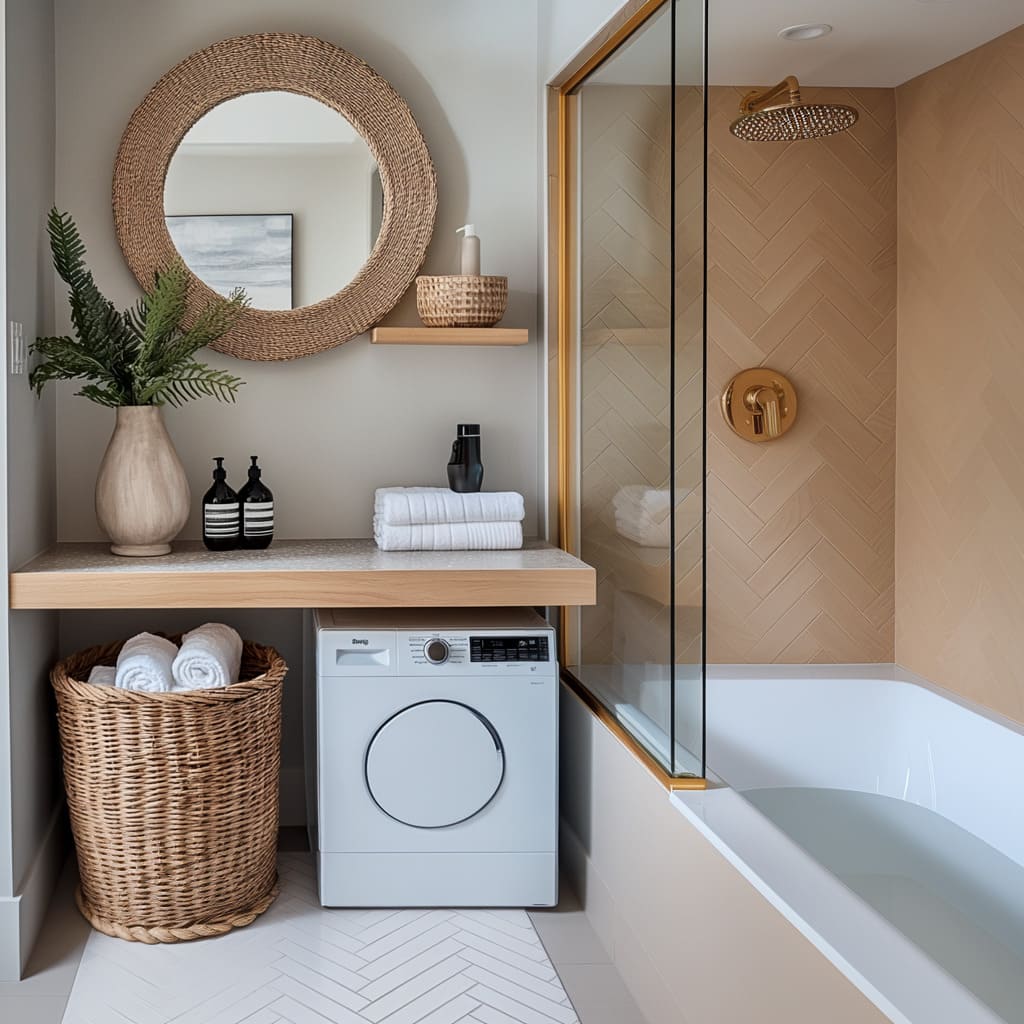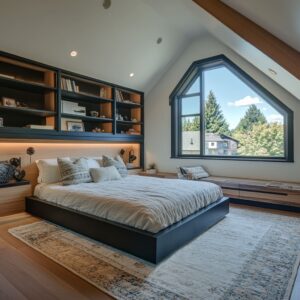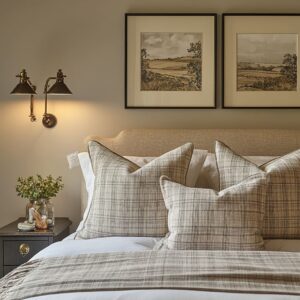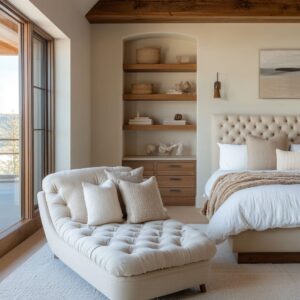Bathrooms are more than just functional spaces; they reflect personal style and the comfort of home. In this article, we dive into the world of bath-shower combos, exploring the creative ways these designs balance aesthetics and practicality.
Whether you’re drawn to sleek modern touches, natural wood finishes, or a mix of timeless and trendy, these ideas will inspire anyone looking to rethink their bathroom space. From warm neutrals to clever storage solutions, the focus is on the thoughtful integration of materials, textures, and layouts that work together to create inviting and efficient spaces.
This guide also highlights trends like gold finishes, herringbone patterns, and frameless glass enclosures that elevate the design. By uncovering innovative approaches and highlighting unique combinations, this article offers a fresh perspective on designing bathrooms that are both stunning and functional.
Interior Design Styles
When it comes to crafting inviting and functional bathrooms, certain design styles stand out for their unique ability to transform everyday spaces into personal retreats. A recurring theme is the fusion of modern and rustic aesthetics.
This approach blends contemporary sleekness with the charm of natural elements like wood textures, woven accents, and soft, earthy tones. Adding polished gold or black fixtures creates a striking contrast that enhances the overall appeal while keeping the design refined.
Scandinavian minimalism is another popular choice, emphasizing clean lines, light tones, and natural materials. This style thrives on simplicity but ensures a warm and inviting feel through subtle details, such as the use of greenery or textured elements.
Even the smallest details, like a thoughtfully placed mirror or a soft rug, contribute to a cohesive and welcoming environment.
For those seeking a more luxurious experience, spa-inspired designs offer a refined atmosphere. Features like rainfall showerheads, creamy beige or white color palettes, and marble accents evoke the relaxing ambiance of high-end spas.
These elements are particularly effective in smaller spaces, proving that small bathroom designs with shower and bath can still feel indulgent with the right choices. The interplay of rustic and modern touches softens the sharpness of contemporary designs, allowing for a more approachable and personalized look.
Meanwhile, Scandinavian simplicity, when paired with upscale details such as gold fixtures or patterned flooring, strikes a balance between understated elegance and functionality. With these versatile styles, homeowners can create bathrooms that not only reflect their taste but also enhance the experience of everyday routines.
Key Design Elements
When designing a bathroom with a bath-shower combination, several elements play a pivotal role in shaping both functionality and aesthetics. These features not only enhance the usability of the space but also ensure that the visual appeal aligns with modern trends.
Let’s explore the most notable design choices and how they contribute to the overall impact of these bathrooms.
Bath-Shower Combinations
Built-in tubs form the foundation of most bath-shower combos. Their rectangular shapes and matte white finishes create a timeless and clean look, seamlessly integrating into various styles.
These tubs are often framed by tile or wooden surrounds, adding depth and texture while maximizing space efficiency. Frameless glass enclosures, a hallmark of modern design, are frequently used to maintain an open and airy atmosphere.
Their simplicity avoids clutter and allows the focus to remain on other design features. To elevate the shower experience, rainfall showerheads are a go-to choice, offering a luxurious feel that emulates spa-like comfort.
Paired with handheld sprayers, these setups provide practicality for cleaning and versatility for different users. The addition of recessed niches within the shower area is another clever feature, providing built-in storage for essentials like shampoo and soap while maintaining a streamlined appearance.
Materials and Finishes
Material selection is crucial in defining the bathroom’s character. Herringbone patterns are a popular choice for both walls and flooring, adding subtle visual interest without overwhelming the space.
This classic yet contemporary detail guides the eye through the room, creating a sense of continuity. Natural wood accents are another staple, often appearing in vanities, paneling, or tub surrounds.
The warmth of wood contrasts beautifully with cooler tiles or neutral palettes, ensuring a balanced and inviting ambiance. Gold fixtures, whether in brushed or polished finishes, are consistently used to tie together modern and rustic elements.
Brushed gold, in particular, offers a softer and more refined aesthetic, making it an ideal choice for those seeking understated sophistication.
Lighting and Accessories
A layered lighting plan is essential for functionality and mood. Recessed lights within the shower provide soft, ambient illumination, while wall sconces around mirrors offer focused task lighting for daily routines.
Natural light is also emphasized, with strategically placed windows or skylights brightening the space and connecting it to the outdoors. Accessories complete the look, with woven baskets, greenery, and textured vases adding a touch of nature and cohesion.
These simple yet effective additions tie together the design, creating a space that feels both polished and approachable.
Useful Observations
The combination of frameless glass and recessed niches works particularly well in compact bathrooms, making the space feel more open and luxurious. Herringbone tiling, when applied to both vertical and horizontal surfaces, achieves a sense of flow and guides the eye across the room effortlessly.
Gold accents also play a critical role, softening the rustic feel of natural wood and preventing it from leaning too casual. When considering bathroom remodel ideas, these elements prove invaluable for achieving a design that is both functional and visually striking.
By thoughtfully integrating bath shower ideas, homeowners can create a space that balances modern trends with timeless charm. Whether your bathroom is large or compact, these details ensure it will feel cohesive and purposeful.
Trends in Design
Bathroom interiors are increasingly reflecting a blend of practicality and aesthetic innovation, as highlighted by several prevailing trends. These trends redefine how bathrooms, especially small bathroom designs with shower setups, cater to modern lifestyles without sacrificing comfort or visual appeal.
Trending Features
One of the key features shaping contemporary bathrooms is the concept of functional luxury. This approach combines usability and indulgence, with elements like handheld sprayers and thermostatic controls offering convenience alongside a touch of refinement.
Recessed niches, another popular addition, contribute not only to utility but also to a streamlined design, ensuring toiletries and accessories blend seamlessly into the space. In terms of color palettes, warm neutrals such as beige, taupe, and light wood have taken center stage.
This shift away from colder greys creates an inviting and tranquil atmosphere, perfect for relaxation. By pairing these hues with mixed textures—like matte finishes and tactile surfaces such as woven accents or chevron tiles—designers achieve a look that feels layered and sophisticated.
The trend of open visual flow is another standout feature. Frameless glass enclosures and minimalistic layouts ensure bathrooms feel spacious and uncluttered, even in compact settings.
This approach works particularly well in smaller spaces, where maximizing light and openness is key.
Emerging Ideas
An innovative trend gaining traction is the integration of laundry units within bathroom spaces. By incorporating these functional elements into designs that feature natural wood cabinetry, homeowners can optimize space without detracting from the room’s overall aesthetic.
This idea resonates with the growing demand for multi-functional spaces that cater to busy, modern lives. Another unique detail making waves is the use of woven materials for vanity fronts or drawers.
These textures add a handcrafted, artisanal quality to the bathroom, creating a sense of warmth and individuality. When paired with clean lines and neutral tones, they serve as an unexpected focal point that elevates the overall design.
In conclusion, today’s bathroom trends reflect a careful balance between practicality and style. From layered textures to smart layouts, these ideas showcase how thoughtful design can transform even the smallest spaces into functional and inviting retreats.
Whether renovating or starting from scratch, these trends offer inspiration for creating a bathroom that feels as good as it looks.
Design Principles at Play
A successful bathroom design seamlessly balances form and function, with key principles guiding the interplay of materials, layouts, and finishes. These design fundamentals ensure that even complex combinations of styles and elements feel intentional and visually pleasing, offering inspiration for small bathroom remodel ideas that maximize both style and utility.
Balance
Achieving balance is central to these bathroom interiors. Natural materials like wood and woven textures soften the sleekness of modern elements such as gold fixtures and glass panels.
This careful pairing ensures a harmonious blend of rustic warmth and contemporary polish. Furthermore, horizontal and vertical herringbone patterns add a rhythmic structure to the space, drawing attention without overwhelming the overall design.
By introducing subtle variations in texture, monotony is avoided, creating a dynamic yet cohesive look.
Proportion and Scale
The scale of each design element plays a pivotal role, especially in compact layouts. Bathtubs and shower areas are thoughtfully sized to enhance functionality without overpowering the room.
For instance, built-in tubs framed by tiled surrounds feel substantial yet understated, making them a natural fit within limited spaces. Large mirrors are strategically placed to amplify the sense of openness, reflecting both light and architectural features.
Similarly, frameless glass enclosures extend this effect, ensuring the layout feels expansive and inviting.
Unity and Cohesion
Color and texture are key in creating unity throughout the room. A deliberate use of cohesive palettes ties together tiles, fixtures, and furniture.
Neutral tones like beige, cream, and natural wood form a serene backdrop, while gold accents are repeated consistently across taps, showerheads, and even drawer handles. This continuity helps disparate elements—such as chevron-patterned tiles and woven-front vanities—feel connected and purposeful.
The result is a bathroom that feels as though every detail was designed with the bigger picture in mind.
Focus
Each design employs a focal point to draw the eye and anchor the room. In many cases, the bath-shower combo serves as the centerpiece, with accent walls in chevron or herringbone patterns adding a bold touch.
These geometric layouts not only define the bathing area but also create a sense of depth and sophistication. In other examples, black mirrors or accent walls provide contrast, offsetting lighter tones and adding a layer of visual intrigue.
These focal features ensure the room feels thoughtfully curated, rather than simply functional. By applying these principles of balance, proportion, unity, and focus, designers achieve spaces that feel timeless and tailored to individual needs.
Whether renovating or starting fresh, understanding these concepts can transform even the smallest bathrooms into highly functional and stylish retreats.
Stylish & Practical Combinations
Rustic Meets Luxury
A striking combination of rustic materials and luxurious finishes is becoming a hallmark of contemporary bathroom design. Natural wood paneling or vanities create a warm and inviting atmosphere, especially when paired with brushed gold fixtures.
This combination strikes a fine balance between high-end appeal and approachable charm. The addition of woven-front vanities enhances this blend by introducing texture that feels artisanal and sophisticated, tying the room together in a subtle but impactful way.
Brushed gold taps and showerheads stand out as functional accents, their softer sheen complementing the raw texture of wood without overpowering the design. This pairing works particularly well in small bathroom ideas with shower combinations, where maximizing visual impact without overwhelming the space is essential.
Laundry Integration
Integrating laundry units into bathroom designs is an emerging trend that prioritizes both style and practicality. Clever cabinetry conceals appliances, helping the room retain a streamlined look.
By using matching wood finishes or painted panels, these spaces feel cohesive and uncluttered. Above laundry units, open shelving adds versatility, offering room for both storage and decorative elements.
Items like woven baskets or greenery can elevate the aesthetic, while still maintaining functionality. This innovative approach works particularly well in smaller layouts, where multi-use spaces are a necessity.
Textured Floor and Walls
Chevron and herringbone patterns are proving to be timeless choices for adding dimension to bathroom designs. When used on both floors and walls, these patterns create a harmonious visual flow that guides the eye across the space.
The effect is particularly impactful in compact bathrooms, where strategic use of texture can make the room feel larger and more dynamic. Pairing textured tiles with smooth surfaces—such as polished countertops or minimalist fixtures—ensures balance, preventing the design from feeling overly busy.
This technique highlights the artistry of the tilework while maintaining a sense of simplicity. By thoughtfully combining these elements, the room feels well-composed and effortlessly chic, making it a perfect inspiration for modern small bathroom ideas with shower setups.
These stylish combinations demonstrate how thoughtful pairings of texture, material, and function can transform bathrooms into both practical and visually stunning spaces. From rustic-luxury blends to cleverly integrated laundry features, these ideas cater to a wide range of design preferences while offering practical solutions for modern living.
Insights and Ideas
Layering materials such as natural wood, woven textures, and sleek metal finishes introduces depth and character to bathroom designs, creating spaces that feel both inviting and polished. This approach is particularly impactful in smaller layouts, where maximizing visual interest without overwhelming the space is key.
Gold fixtures continue to prove their versatility, seamlessly blending into both warm palettes with beige and taupe tones and cooler schemes featuring whites or greys. This adaptability makes gold an ideal choice for a wide range of bathroom shower ideas, offering a timeless and cohesive finish.
Frameless glass enclosures play a dual role in modern bathrooms: they allow natural light to flow unobstructed, while also enhancing the sense of openness. This design choice is particularly effective in compact bathrooms, amplifying the feeling of spaciousness and sophistication.
Ideas for Future Designs
- Mixed Metal Finishes: Introducing a blend of brushed gold and matte black hardware could create a contemporary contrast, adding a bold edge to the design while maintaining cohesion. This combination would also allow for greater flexibility in coordinating with other decorative elements.
- Integrated Smart Technology: Features like digital shower controls, adjustable lighting, and built-in sound systems could elevate the bath-shower experience, transforming a functional space into a personalized retreat. Such additions would cater to modern preferences for convenience and luxury.
- Statement Tile Patterns: While herringbone and chevron tiles are staples in current designs, exploring geometric or mosaic patterns could infuse originality. These designs could work well in bathroom niche ideas, turning functional spaces into visual highlights.
- Dual-Purpose Niches: Recessed niches that incorporate subtle lighting—whether through LED strips or built-in fixtures—could serve both aesthetic and practical functions. This innovation would enhance functionality by illuminating storage spaces while also contributing to the room’s overall ambiance.
By building on these insights and ideas, designers can continue to craft bathrooms that combine practicality, innovation, and timeless style, catering to a wide range of preferences and enhancing everyday living.
Practical Considerations
Designing a bathroom that balances aesthetics and practicality is essential, especially for compact spaces. One of the most effective approaches is prioritizing easy maintenance by incorporating water-resistant materials and seamless elements.
Frameless glass enclosures, for instance, not only look sleek but are simple to clean, making them a popular choice for busy households. Durable tiles on floors and walls further enhance the design’s resilience, ensuring the space stays functional and visually appealing over time.
Storage is another critical aspect, particularly for smaller bathrooms. Built-in options, such as recessed niches in the shower or integrated cabinets under the vanity, help keep essentials organized and out of sight.
This ensures a clutter-free environment, which not only elevates the overall look but also maximizes usability. These smart storage solutions are especially helpful for those looking for bathroom remodel suggestions that combine efficiency with style.
Accessibility features are thoughtfully integrated into modern bathroom designs, blending functionality with subtle elegance. For example, grab bars in brushed gold finishes provide safety without compromising the visual flow of the room.
Similarly, low-threshold showers offer convenience for individuals of all abilities while maintaining a sleek and minimalistic appearance. These practical considerations ensure that the design remains user-friendly, adaptable, and timeless, making it suitable for a wide range of preferences and needs.
By blending durability, storage efficiency, and accessibility, these designs cater to everyday functionality while still delivering a sophisticated and cohesive aesthetic.
Conclusion
These bathroom designs represent a perfect convergence of style, functionality, and innovation. By focusing on warm tones, layered materials, and thoughtful layouts, they create spaces that feel both luxurious and inviting.
The integration of trends like herringbone tiles, gold fixtures, and frameless glass shows how timeless elements can be reinterpreted in modern ways. Future designs can push boundaries further by experimenting with bold contrasts, smart features, and unique textures.
These observations not only highlight the versatility of bath-shower combos but also showcase how design can transform even the most utilitarian spaces into sanctuaries of relaxation and style.
